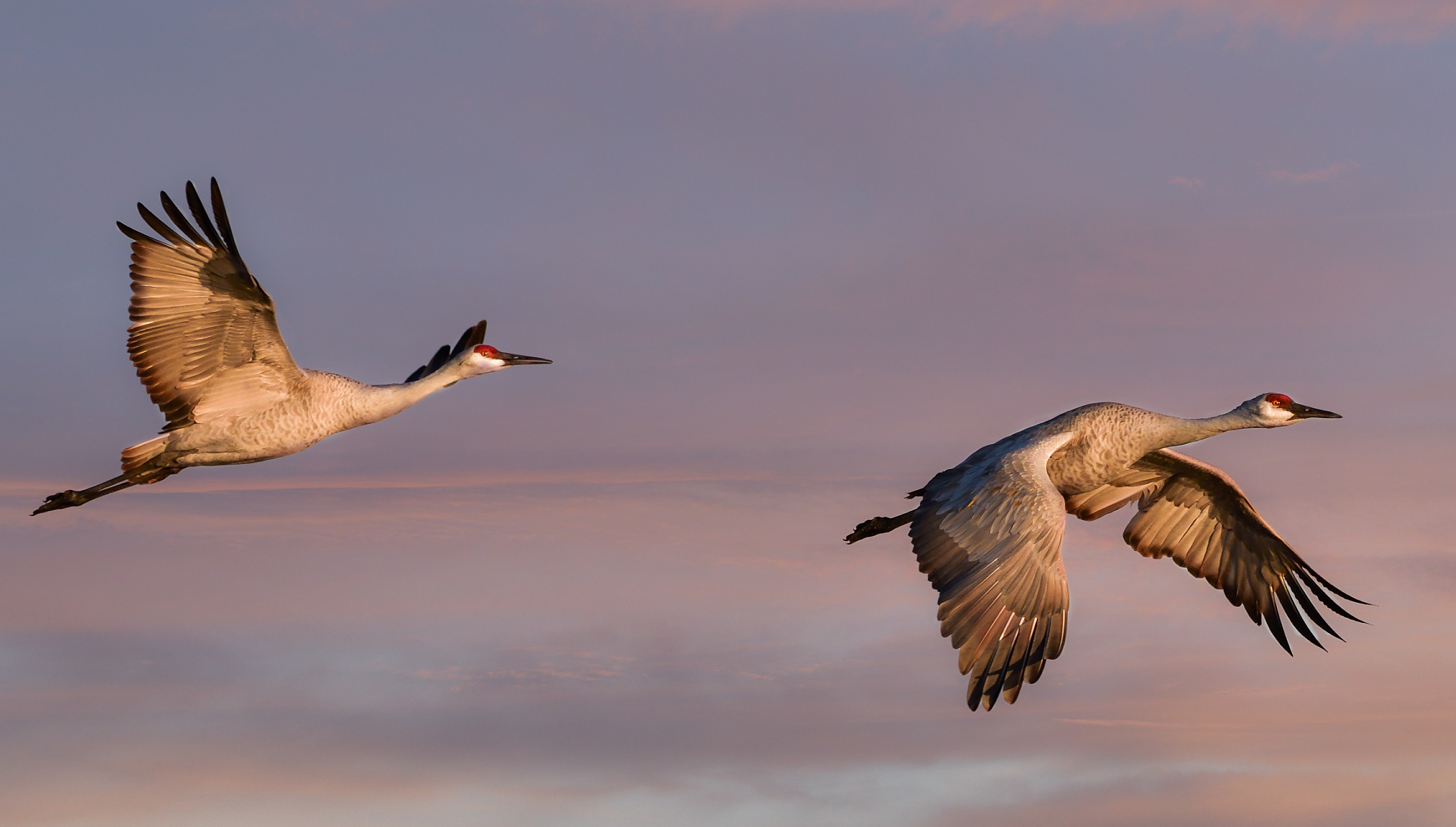As drivers zoom past farm after farm on Interstate 5 south of Sacramento, bird watchers from around the world are perched in a field just three miles away, binoculars trained, tripods set and coats buttoned up tight as the sun begins to set.
Hundreds of huge sandhill cranes are swooping in to bed down for the night at the Woodbridge Ecological Reserve—and it is quite a sight to behold.
The sandhills are the largest species to join the millions of waterfowl that spend the winter in California’s Central Valley at the southern terminus of North America’s Pacific Flyway, a migratory route that extends north to Alaska, Siberia and the Arctic Circle. Experts regard the area as one of the world’s most important migratory destinations for waterfowl.
The Woodbridge Ecological Reserve—also known as the Isenberg Sandhill Crane Reserve—set aside more than 350 acres for migratory birds in 1986. Like many waterways in the Central Valley, the region’s Mokelumne River had been diverted by human settlers to irrigate crops, which dried up wetlands and pushed the sandhills into “threatened” status by 1983.
Forty years later, the cranes are back. Between November and February, an estimated 30,000 sandhills migrate to the Central Valley, and Woodbridge is the largest overwintering site in California.
Both the smaller “lesser” and the “greater” sandhills—the big birds with red caps and a wingspan that can hit 7 feet—can be seen at Woodbridge, Cosumnes and Staten Island, as well as other refuges in the valley managed by the California Department of Fish and Wildlife.
As the last light of a November day purples up the backside of Mount Diablo, shutters click, and birders point excitedly as they discuss their sightings in hushed tones. Thousands of birds are fluttering, flying and floating in the marshlands directly in front of the gravel parking lot of the viewing area along a country road. There are migrating ducks, geese and swans, as well as year-round residents including egrets, pheasants, blackbirds, hawks and kites.
Everyone loves the sandhills. The cranes spend their days poking through muddy canals and flooded fields feeding on grains, insects and other small critters. They roost in wetlands to make it harder for predators to sneak up on them. Sandhills are also famous for performing an especially fabulous mating dance, jumping and throwing sticks in the air before pairing up for life.
Tundra swans are another XL wintertime tourist to the Central Valley. About 100,000 of these long-necked, black-beaked beauties can be seen in the area’s wildlife refuges. The swans, with their 5-foot wingspans, often hang out north of Sacramento, especially in Marysville, where visitors can take tours to see flocks of tundra swans in the rice fields.
The bird heavyweight in the Central Valley is the snow goose. More than 1 million geese migrate to the area each winter. They have a wingspan of 4.5 feet, and thousands might take off en masse at the slam of a car door.
The snow geese are relatively easy to spot across the Sacramento Delta and Central Valley, including in the Yolo County Bypass Wildlife Area near Davis and the massive Sacramento National Wildlife Refuge near Willows. (Check out the refuge’s wildlife cam if you can’t make the drive.) Chico even hosts an annual festival in honor of the snow geese every January.
So the next time you’re driving up, down or across the state on your way to a soccer tournament, a ski weekend or grandma’s house for the holidays, allow an extra hour or two to stop and see the other visitors in town this winter.
Where To See Migrating Sandhill Cranes, Tundra Swans and Snow Geese
- Woodbridge Ecological Reserve is located 80 miles east of San Francisco, near the intersection of Interstate 5 and State Highway 12. A viewing area near the marsh is open 24 hours. Docents also lead tours of the reserve to see sandhill cranes from a viewing shelter, but admission is only open to those with fishing or hunting licenses.
- Every November, Lodi hosts a homecoming festival for the sandhills. The Audubon Society also recommends viewing sandhill cranes at the Cosumnes River Preserve near Galt.
- Tundra swan tours are offered by the California Department of Fish and Wildlife in the fields near Marysville every winter, but spots fill up fast.
- The Sacramento National Wildlife Refuge is home to all of these big migratory waterfowl. The park has two viewing platforms available on its self-drive tour, as well as wetlands trails and a visitor center.
- The Yolo County Bypass Wildlife Area is especially convenient for travelers to Lake Tahoe. On the south side of Interstate 80 just before Sacramento, the refuge is home to all the big migratory birds as well as populations of shorebirds, reptiles and other native species.
